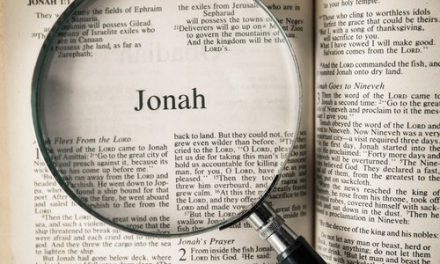‘I have never witnessed as much confusion as there is today about where to find truth. We have people preaching that God is a God of love, not of wrath. We have people proclaiming that heaven is real but hell is only a figment of imagination’ – Billy Graham
The African proverbs that says, ‘life is the beginning of death’ is best exemplified by the life, ministry, marriage and physical death of Rev Dr Billy Graham, a great caller, not just a preacher, ‘an old-style evangelist, in the mould of Dwight L. Moody, John Wesley and George Whitefield.’ In the words of Professor Carl Henry, ‘not everybody is a Theologian, but everybody has a theology … Billy Graham has a theology – doubtless not fully systematized and carefully elaborated in details as the professional theologians would prefer it, but something considerably more than a vague and formless phantom whose features even never to achieve definiteness.’ Graham’s convictions placed him solidly in the tradition of evangelical and biblical theology bearing in mind that the burden of the true evangelist is the apostolic message. Graham’s prophetic, apostolic message and preaching always and generously with emphatic, frank and unashamed declaration, “The Bible says …” point people to a moment and place of decision and commitment to Christ. This formed the basis of Graham’s altar calls in partnership and integration of people with other churches for follow up and discipleship. It is a call beyond a false state of assumption, but a call to responsibility. According to him, “Parents do not abandon a baby at birth, but nourish and protect the life of that child. So evangelists are to assume responsibility for those born into the family of God under their ministry.”
In 1934, at the age of 16, Graham in response to an address by the evangelist Mordecai Ham made a personal commitment to Jesus Christ. He transferred his training in 1937 to the Florida Bible Institute where he became a Baptist by full immersion and graduated in 1940. At Wheaton College, Illinois graduated with BA in anthropology and it was here he met his wife Ruth Bell and they got married in 1943. Ruth passed into glory at the age of 87 in 2007. Graham, a gospel man with gospel message preached purity of his lifestyle in the image of Jesus Christ. His preaching supported by army of local church volunteers was by example. Graham‘s ministry began with Youth for Christ Ministry travelling around America and Europe. He came to United Kingdom in 1946 for the Birmingham Youth for Christ meeting.
In 1947, Graham went for a personal retreat, a ‘Mountain Top’ experience to encounter and seek God’s face and this was a great impetus to his 1949 Los Angeles mission, largest tent revival meeting. His first crusade in UK from March 1st to May 22nd 1954 at the Haringay Arena though was first surrounded in controversy witnessed 2, 047,333 attendance with around 38,000 decisions for Christ. On the Haringay crusade, Richard Bewes explained that “It was a landmark time in my life and for a number who were called into ministry at that time.” Many modern evangelists not only in UK draw inspiration from Graham’s ministry. The testimonies abounds that Graham’s spiritual legacy of the Spring revival meeting of 1954 at Haringay is undeniable. Many other denominations worked with the Evangelical Alliance and hostility among believers ceased as many denominations including the Roman Catholics and diverse groups joined hands together for the revival meetings and follow up of the converts.
Billy Graham Evangelistic Association (BGEA) was also at Cliff College for revival meeting with healing and transformation of souls. Rev Martin Turner gave a glowing testimony about Graham’s ministry: “… He had a great and a good influence upon my life and ministry. I was in the same small room as him once at West Ham Stadium and heard him preach live many times, I did my special study at Teacher Training College on his social attitudes, I chaired the relay meetings at both St. Albans and Halifax, I worked alongside his converts in many situations, I stood behind his travelling pulpit in North Carolina and wept as I prayed that just a fraction of his anointing might be on my preaching. He was marked by humility, a great and a good man, we can be thankful to God for him.”
Graham, the founder of Christianity Today magazine, as a spiritual genius rose above divisions and racism through his legacy and outreach across lines of race, class, and political party. To Graham, “there was no room for segregation at the foot of the cross.” It is on record that in 1953, Graham ‘personally removed the segregating ropes at a Chattanooga crusade. After the Supreme Court’s 1954 desegregation ruling, Graham abandoned the practice of respecting local racial practices.’ The challenge is how this legacy will resonate in contemporary evangelicalism. Tom Mchahan in his book, ‘Safari for Souls: With Billy Graham in Africa,’ provides a summary of the rise in evangelical Christianity in Africa through the inspiration and support of Billy Graham. It is on record that ‘Graham was far more sympathetic towards civil rights than many other white Christian pastors of his generation, and he pushed for non-segregated crusades early in the 1950s.’ The president of the National Latino Evangelical Coalition, Gabriel Salguero provides a clue to the legacy Graham as a beloved leader left across different groups of American Christians: “Our generation owes this giant of the Christian faith a debt of gratitude for paving the way for sharing the Gospel with the world with humility, graciousness, and integrity.”
For Graham, the Gospel as a serious soul restoration and transformation is beyond flowering oratory, good works, and jokes. A former director of the BGEA (1961-1987), Maurice Rowlandoson explained that Graham “… has the gift of bringing people to the point of decision.” Graham’s celebrity status and fame spread as a true evangelist with the use of social media –including radio and TV. The table below by Andy Peck summarised Graham’s crusade timelines in UK covering approximately 18 crusades in 35 years:
| Year | Location | Dates | Attendance | Decisions |
| 1954 | London, England | March 1 – May 22 | 2,047,333 | 38,447 |
| 1955 | Glasgow, Scotland | March 21 – April 30 | 2,647,365 | 52,253 |
| 1955 | London, England | May 14 – 21 | 450,000 | 23,806 |
| 1961 | Manchester, England | May 29 – June 17 | 416,500 | 17,769 |
| 1966 | London, England | June 1 – July 2 | 1,055,368 | 42,487 |
| 1980 | Oxford, England | January 30 – February 3 | 13,350 | 312 |
| 1980 | Cambridge, England | February 9 – 16 | 17,450 | 1,565 |
| 1982 | Blackpool, England | March 23 | 18,800 | 1,035 |
| 1984 | Bristol, England | May 12 – 19 | 243,500 | 20,444 |
| 1984 | Sunderland, England | May 26 – June 2 | 124,097 | 11,785 |
| 1984 | Norwich, England | June 9 – 12 | 62,700 | 3,702 |
| 1984 | Birmingham, England | June 30 – July 7 | 257,015 | 26,181 |
| 1984 | Liverpool, England | July 14 – 21 | 247,989 | 27,412 |
| 1984 | Ipswich, England | July 24 – 28 | 90,363 | 7,458 |
| 1985 | Sheffield, England | June 22 – 29 | 257,900 | 26,131 |
| 1985 | Livelink Satellite Centers (51 Venues) | 181,356 | 8,186 | |
| 1989 | London, England | June 14 – July 8 (13 days) | 379,950 | 34,408 |
| 1989 | Livelink Centers, Great Britain | June 26 – July 1 | 817,000 | 46,111 |
The physical death of Graham is not just a news of a ministry that spanned over 60 years, it is a Gospel News that points to the reality of Heaven and the urgency for personal decision in confessing Jesus as Lord and Saviour. Graham’s evangelical theology stands ‘consciously over against the optimistic liberal tradition in theology.’ The legacy of Graham is our uncompromising readiness ‘to confess that evangelism is ideally the task of the local Church. There is necessity of mass evangelism in our generation more than before because of the decline and ‘loss of the evangel or good news by multitude of pulpits or its retention simply in principle without an urgent outreach to the lost.’ Beyond the complaints of his critics, ‘Graham preaches no plan of salvation which can comfort man in sin. It is man’s sin which has nailed Christ to the tree and it is to free us from the tyranny of sin that He became our Saviour. Christ is not Christ if He cannot break the power of cancelled sin.’











Recent Comments